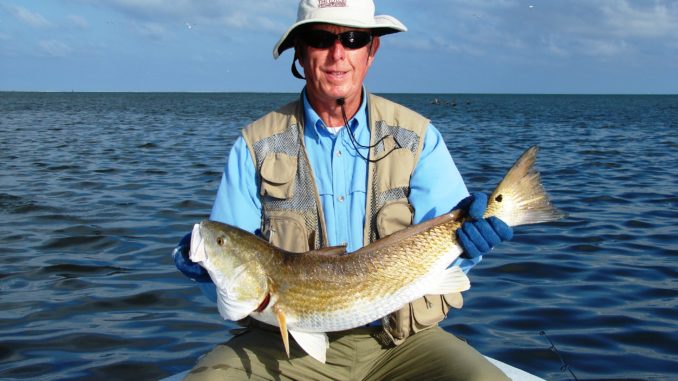
North Carolina Division of Marine Fisheries officials closed the commercial red drum fishery effective yesterday, but the April 12 proclamation by DMF Director Louis Daniel was not an end to all commercial fishing for red drum. Instead, it was but merely an early closing of the first segment of the two-part state commercial redfish season.
The proclamation states that at 4 p.m. on April 13 the commercial season for red drum closed and no one may offer redfish for sale. Dealers have until April 20 to sell and transport any unfrozen red drum caught before the closure became effective.
However, the general regulations include a second commercial season that will open on May 1.
North Carolina regulations allow for a red drum fishing year that begins on Sept. 1 and ends on Aug. 31. This year is further divided into a fall season beginning Sept. 1 and ending April 30, and a spring/summer season that begins May 1 and ends August 31.
The fall red drum season has a maximum allowable catch of 150,000 pounds and the spring/summer red drum season has a maximum allowable catch of 100,000 pounds for a maximum annual catch of 250,000 pounds.
“The season was closed because our figures showed the cap for the fall (commercial) season would be reached by that time,” said DMF Director Daniel. “This is a fishery that is still monitored by trip tickets, and on April 12 I received a report that 137,000 pounds had been landed at the end of February. At usual rates of harvest, we should be approaching the cap, so I issued the proclamation to close the season.
“This closure will only be for a few weeks. The summer (commercial) season will be opening on May 1.”
Daniel explained that if, after all the trip tickets are totaled there was an underage, the remaining pounds would be added to the 100,000 pounds allowed for the summer season. He also said if there was an overage, it would be deducted from next year’s fall season. If there is an underage for the year, those pounds are not rolled over into the next year.
“North Carolina has two fisheries that include red drum as a bycatch,” Daniel said. “Several years ago, we had a huge fall catch and had to close the commercial season for several months. At that time we divided the allowable catch into two seasons and amounts based on historical harvest records.
“The purpose was to prevent wasted fish and allow both summer and fall fishermen an opportunity to sell some of their drum. Red drum are only allowed commercially as bycatch, and the great majority comes from the flounder gill net fishery.”
Daniel said underages can transfer from the fall season to the summer season, but not into the next year, which begins September 1. He said overages would be reduced from the next year’s allocation and the reduced catch would be assigned to whichever segment of the fishery produced the overage.
“Our records show that at the current rate of recreational harvest, a year class of red drum can handle the 250,000 pound commercial harvest of red drum and still produce at a level needed to sustain the fishery,” Daniel said. “In fact, the numbers are increasing. This was just a closure because the (commercial) catches were approaching the cap for the fall segment and we didn’t want to go over. The summer segment of the (commercial) fishery will be opening in a few weeks.”




Be the first to comment